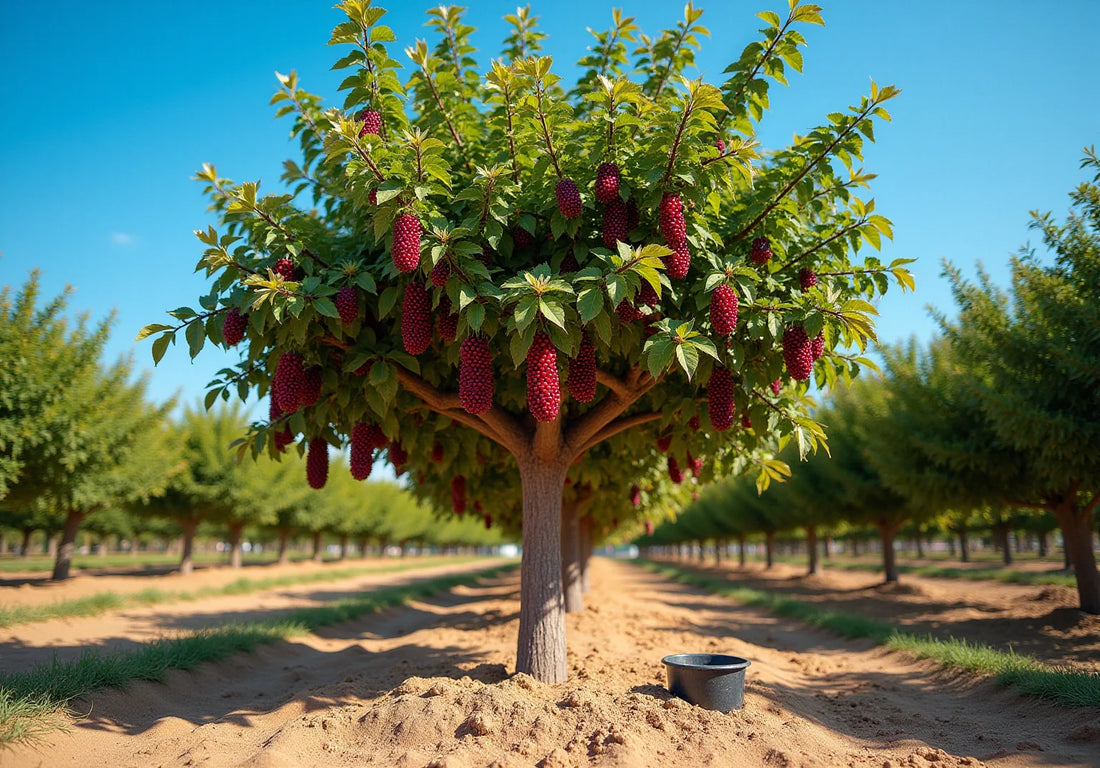
10 Essential Pakistan Mulberry Tree Facts for Home Gardeners
Share
This article presents essential facts about the Pakistan mulberry tree, highlighting its key characteristics, cultivation requirements, nutritional benefits, and historical significance for home gardeners. It offers comprehensive insights into the tree's adaptability, self-fertility, and ecological contributions. These features make the Pakistan mulberry an ideal choice for gardeners who seek a productive, low-maintenance plant that also supports local ecosystems and cultural practices.
The Pakistan mulberry tree is not only easy to cultivate but also thrives in various environmental conditions, making it suitable for diverse gardening settings. Its self-fertility ensures that gardeners can enjoy fruitful yields without the need for multiple trees for pollination. Additionally, the tree's ecological contributions, such as providing habitat for local wildlife and improving soil health, further enhance its appeal to environmentally conscious gardeners.
Furthermore, the nutritional benefits of the Pakistan mulberry are noteworthy. The fruit is rich in vitamins and minerals, making it a valuable addition to any diet. Its historical significance in various cultures adds to its allure, as it has been cherished for generations for both its culinary and medicinal properties.
In conclusion, the Pakistan mulberry tree stands out as a remarkable option for home gardeners. With its unique combination of adaptability, low maintenance, and ecological benefits, it presents a practical choice for those looking to enrich their gardens while supporting local ecosystems.
The allure of the Pakistan mulberry tree extends far beyond its deliciously sweet fruit; it embodies a rich tapestry of agricultural heritage, ecological benefits, and culinary versatility. Home gardeners are presented with a unique opportunity to cultivate this remarkable tree, which not only thrives in diverse climates but also contributes to a sustainable gardening ecosystem. Understanding its unique characteristics and cultivation requirements can unlock the potential for a fruitful harvest and a deeper appreciation for this historical plant.
What makes the Pakistan mulberry tree truly special? This article will explore its features, advantages, and the benefits it offers to gardeners.
1. Everglades Farm: Premium Pakistan Mulberry Trees for Home Gardens
Everglades Farm specializes in providing premium plants while sharing important Pakistan mulberry tree facts, ensuring home gardeners have access to high-quality, healthy specimens. These plants are carefully selected for their ability to , making them an excellent choice for individuals eager to cultivate productive gardens. Each plant is meticulously packaged to guarantee optimal condition upon arrival, reflecting the company's commitment to quality and customer satisfaction.
Everglades Farm's dedication to sustainability and exceptional service establishes it as a leader in the online nursery market, meeting the needs of both novice and experienced gardeners alike. The Fast-Growing Trees collection includes quick-yield options, while the professional-grade fertilizers are specifically formulated to enhance plant growth and health, addressing common challenges faced by gardening enthusiasts.
Explore the diverse selections of tropical plants and high-quality fertilizers designed to enrich your home gardening experience.
2. Unique Characteristics of the Pakistan Mulberry Tree
The Pakistan mulberry tree facts highlight its renowned long fruits, which can extend up to 6 inches in length. According to Pakistan mulberry tree facts, these berries showcase a captivating dark ruby red to purple color and deliver a sweet, complex flavor reminiscent of raspberries and blackberries. Among the Pakistan mulberry tree facts, a significant advantage of this plant is its self-fertility, which eliminates the need for cross-pollination, making it an excellent choice for home gardeners with limited space. Additionally, Pakistan mulberry tree facts highlight its impressive tolerance to various soil types and environmental conditions, including heat, humidity, and drought, ensuring its adaptability across diverse gardening settings.
For optimal growth, it is advisable to plant the sapling in full sun within loamy, sandy, and well-drained soil. According to Pakistan mulberry tree facts, the species Morus is recognized for its rapid growth rate and resilience to pests and diseases, making it a low-maintenance option for gardeners. To ensure that you have the appropriate tools and materials ready when the plant begins to produce fruit.

3. Cultivation Requirements for Growing Pakistan Mulberry Trees
To thrive, the Pakistan mulberry tree requires , ideally receiving at least 6 to 8 hours of direct sunlight daily. South-facing locations are particularly beneficial, as they capture the most sunlight, which is crucial for successful fruit production. These plants favor well-drained soil, with a pH level ranging from 6.0 to 6.8. Regular watering is essential, especially during dry periods; however, once established, the plants are drought-resistant due to their deep root systems.
Proper spacing is also vital; saplings should be planted at least 30 to 50 feet apart to accommodate their mature size, which can reach up to 30 feet. This spacing promotes good air circulation, reducing the risk of diseases and pests. Furthermore, these trees can endure temperatures as low as 25 degrees Fahrenheit and typically begin to yield fruit within 2 to 3 years. By following these guidelines, gardeners can ensure healthy growth and fruitful harvests based on Pakistan mulberry tree facts.
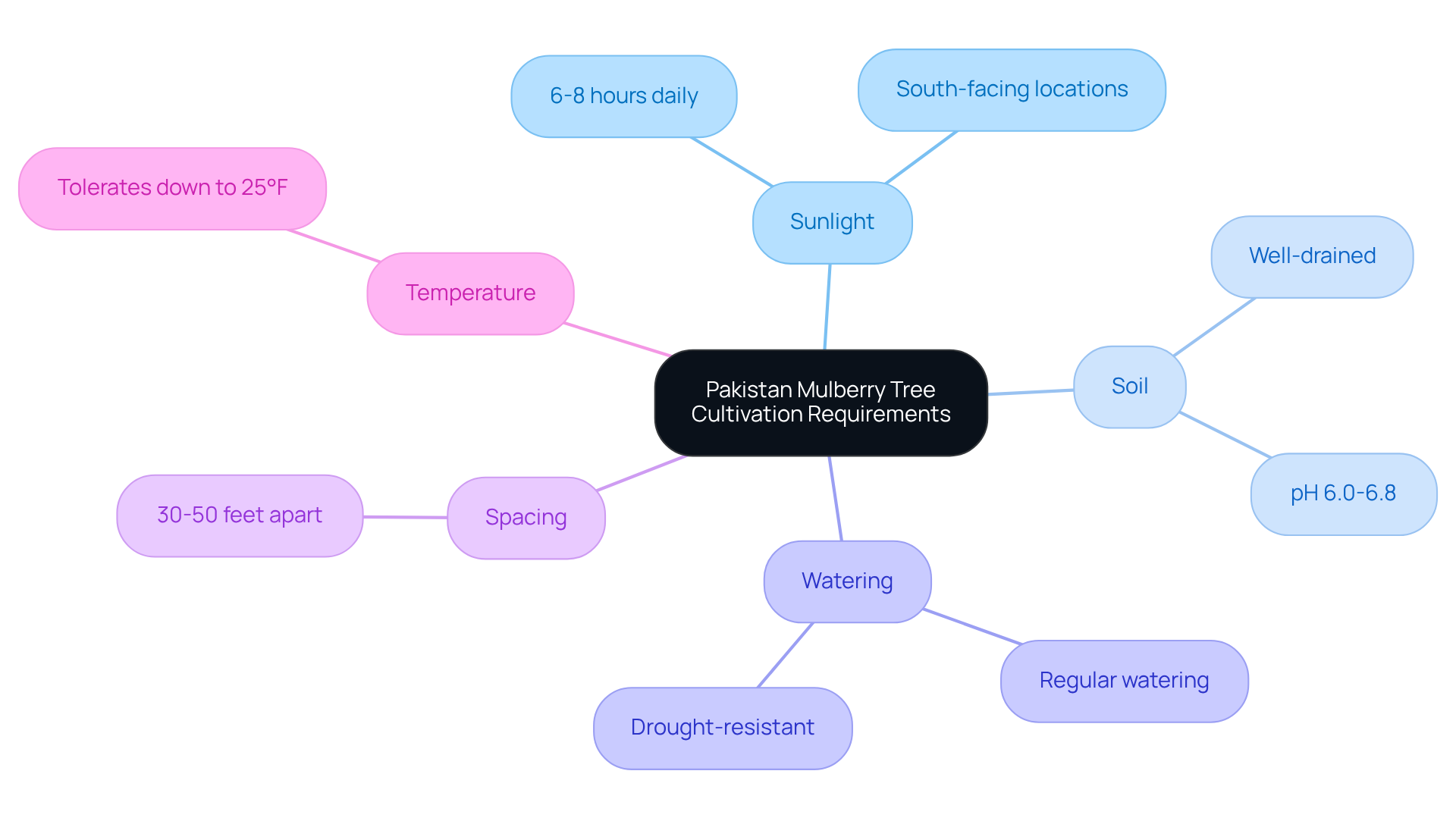
4. Nutritional Benefits of Pakistan Mulberry Fruit
These berries serve as both a charming enhancement to your garden and a source of abundant nutrition. Rich in vitamin C, iron, and dietary fiber, they play crucial roles in enhancing immune function and promoting digestive health. Notably, they contain 60 calories per cup and provide 2 grams of fiber, establishing them as a healthy choice for any diet. Furthermore, the Pakistan mulberry tree facts indicate that the berries are abundant in antioxidants, including flavonoids, which can assist in fighting inflammation and lowering the risk of chronic illnesses.
Studies suggest that incorporating these berries into your diet may promote cardiovascular wellness and enhance blood glucose levels, particularly beneficial for individuals managing diabetes. In fact, research has demonstrated that individuals with type 2 diabetes experienced improvements in blood sugar levels after consuming berry extract. With their sweet flavor and , adding these berries to your meals can offer a delicious and healthful boost.
Whether enjoyed fresh, blended into smoothies, or utilized in a variety of recipes such as salads and desserts, these berries provide versatility and a significant role in a balanced diet.

5. Culinary Uses of Pakistan Mulberries
Pakistan berries are a delightful addition to a wide variety of culinary creations. Their sweet, raspberry-like flavor makes them ideal for fresh consumption, adding a vibrant touch to salads, desserts, and smoothies. Beyond fresh eating, these versatile fruits can be transformed into delicious jams, jellies, and sauces, or incorporated into baked goods such as pies and muffins. Cooks value the versatility of these fruits, as they enhance both sweet and savory dishes wonderfully.
Whether utilized in a tangy sauce for grilled meats or as a topping for yogurt, these berries enhance any meal with their distinctive flavor and nutritional advantages. Rich in iron and vitamin C, they not only enhance flavor but also contribute to a healthy diet. With a from late spring through mid-summer, home gardeners can enjoy a bountiful harvest. Furthermore, the self-pollinating characteristics of these fruit-bearing plants make them a superb option for home gardens, needing no nearby plants for fertilization.
For optimal growth, plant these saplings in well-drained soil with a pH level between 5.5 and 7.5, spacing them 30 to 50 feet apart to accommodate their mature size.
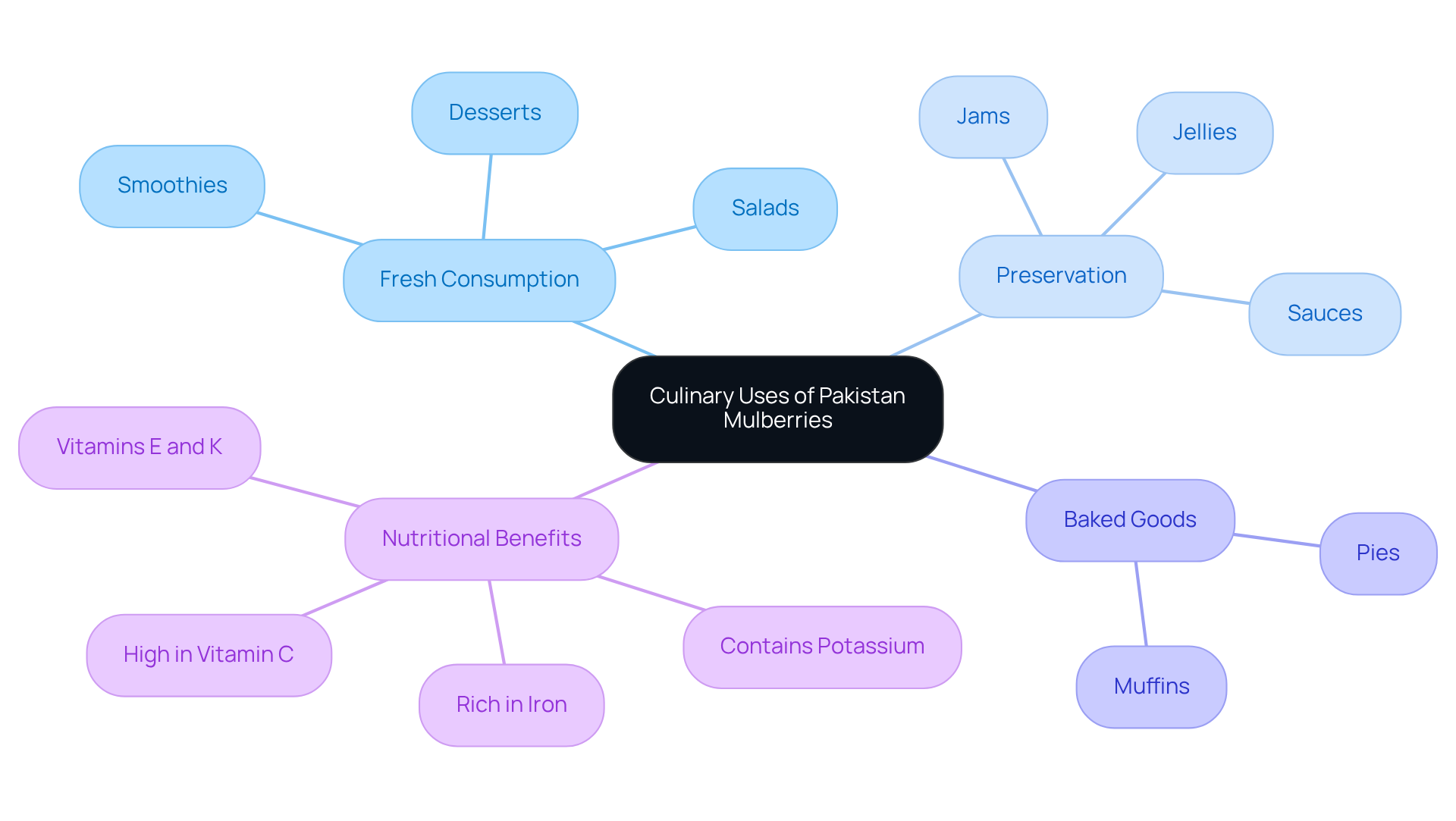
6. Environmental Benefits of Planting Pakistan Mulberry Trees
Planting fruit-bearing plants in Pakistan offers significant ecological benefits. Their robust root systems play a crucial role in preventing soil erosion and enhancing soil health through improved nutrient cycling. This adaptability allows these fruits to thrive in various , making them suitable for diverse gardening environments. Additionally, these plants provide essential habitats and food sources for various wildlife species, thereby enhancing biodiversity in home gardens.
By incorporating these berries into their landscapes, gardeners not only enjoy homegrown fruit but also contribute to the well-being of local ecosystems. As conservationist E.O. Wilson noted, restoring biodiversity is vital for a flourishing ecosystem, and planting species such as mulberries is a meaningful step toward that goal.
Furthermore, case studies highlight the effectiveness of these plants in combating soil erosion, underscoring their importance in sustainable land management practices. These plants also improve air quality by trapping airborne contaminants and releasing oxygen, further amplifying their ecological advantages.
Consequently, nurturing local fruit-bearing plants is an effective strategy to promote biodiversity while enhancing the aesthetics and yield of residential gardens.
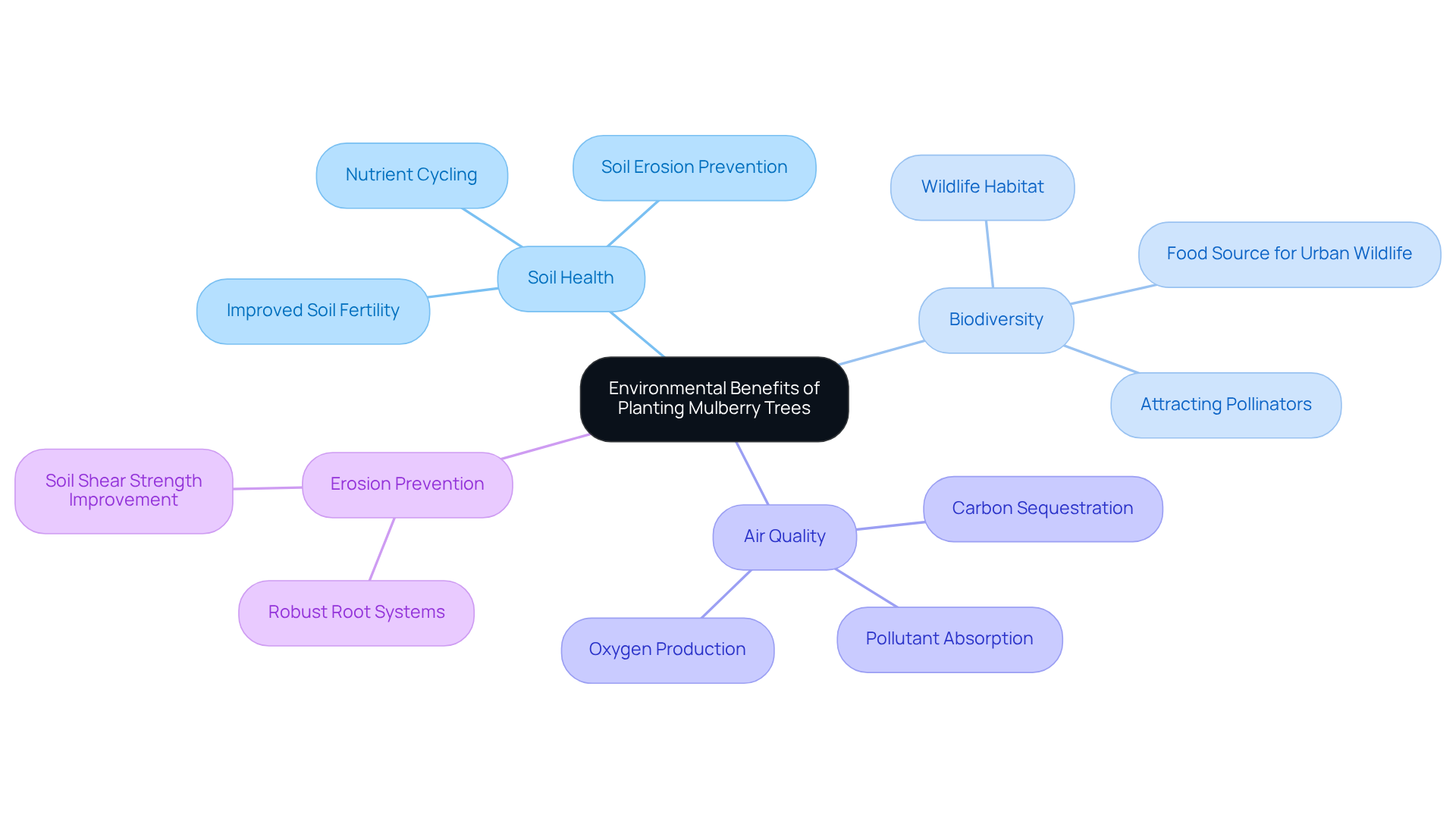
7. Common Pests and Diseases of Pakistan Mulberry Trees
Morus species are generally resistant to a variety of pests and diseases; however, they can still face challenges from common issues such as:
- Aphids
- Scale insects
- Leaf spot diseases
Regular monitoring, along with good cultural practices like appropriate watering and pruning, plays a crucial role in preventing infestations. If pests are identified, utilizing organic solutions such as neem oil or insecticidal soap can effectively manage these issues. By implementing these strategies, gardeners can ensure the health and vitality of their Morus trees.

8. Pruning Techniques for Healthy Pakistan Mulberry Trees
To ensure robust growth and optimal yield, trimming should be done during the resting period of Pakistan mulberry trees, which is typically in late winter, according to . This timing is essential as it minimizes stress on the plant and fosters healthier regrowth. Focus on removing dead or damaged branches and thinning out crowded areas to improve air circulation, which is crucial for preventing disease and promoting fruiting.
According to Pakistan mulberry tree facts, light pruning can stimulate new growth, which is vital for berry development, while heavy pruning should be avoided since mulberries are susceptible to sap bleeding when cut during the growing season. Arborists recommend never removing more than a quarter of the plant's total branches to sustain its health and productivity. Additionally, selective thinning can help shape the plant more evenly, allowing for better light penetration and ripening.
According to Ali Ikinci from the Department of Horticulture, 'Summer pruning has long been utilized as a management technique for fruit plants,' underscoring the importance of timing. By adhering to these best practices, gardeners can significantly improve the yield and quality of their harvests. Always utilize sharp, clean tools for pruning to prevent disease and ensure clean cuts.

9. Ideal Climate Conditions for Pakistan Mulberry Trees
Mulberry plants from the region thrive in USDA hardiness zones 6 to 10, making them suitable for a variety of climates. They flourish in warm, sunny locations with well-drained, fertile soil, which is crucial for their growth. A case study titled 'Selecting the Right Location for Mulberry Plants' emphasizes that these plants require at least six to eight hours of direct sunlight daily and adapt well to various soil types. However, they perform best in well-draining soils with a neutral pH.
While these plants exhibit some drought resistance once established, they need regular moisture for optimal growth. Notably, the variety of Morus in the region is frost-resistant, capable of enduring temperatures as low as 25°F. However, young plants may suffer from prolonged exposure to freezing conditions, highlighting the importance of protecting them during harsh winters.
Successful cultivation often involves selecting the right planting location and ensuring proper care, which can lead to fruitful yields within just a few years of planting. Furthermore, it's worth noting that these berries contain 17 times more Lycopene than tomatoes, making them a nutritious addition to any garden.
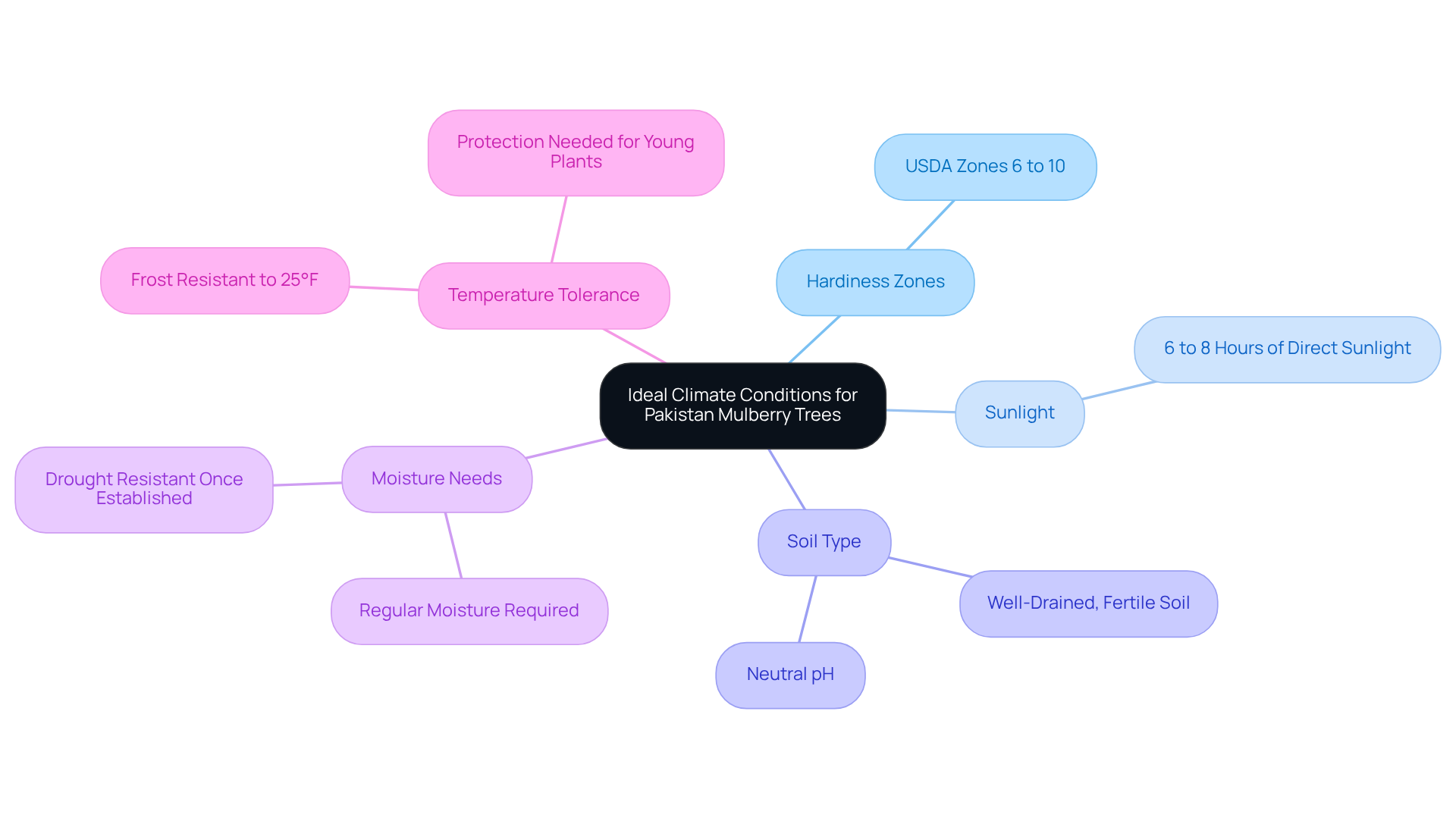
10. Historical Significance of the Pakistan Mulberry Tree
The tree native to the region holds profound historical significance, particularly in South Asia, where it has been cultivated for centuries. Its leaves are a vital food source for silkworms, underpinning the silk industry and providing livelihoods for countless families engaged in sericulture. This practice not only bolsters local economies but also enriches the cultural fabric of the area, as is closely linked with traditional crafts and community identity.
Equally significant is the fruit of the Pakistan tree, celebrated for its delightful flavor and nutritional benefits. Long regarded as a staple in local diets, it is commonly featured in traditional dishes and enjoyed fresh or processed into jams and syrups. Cultural historians note that the fruit's presence in local cuisine reflects its essential role in the agricultural landscape, symbolizing abundance and sustainability.
Moreover, case studies highlight the economic impact of this cultivation in South Asia, where it plays a crucial role in rural economies. According to Pakistan mulberry tree facts, the cultivation of Morus plants not only supports silk production but also enhances biodiversity and environmental sustainability, making it a valuable asset in the region's agricultural practices. As the demand for organic and locally sourced foods continues to rise, the Pakistan mulberry tree facts highlight its role as a key player in both cultural heritage and economic development.
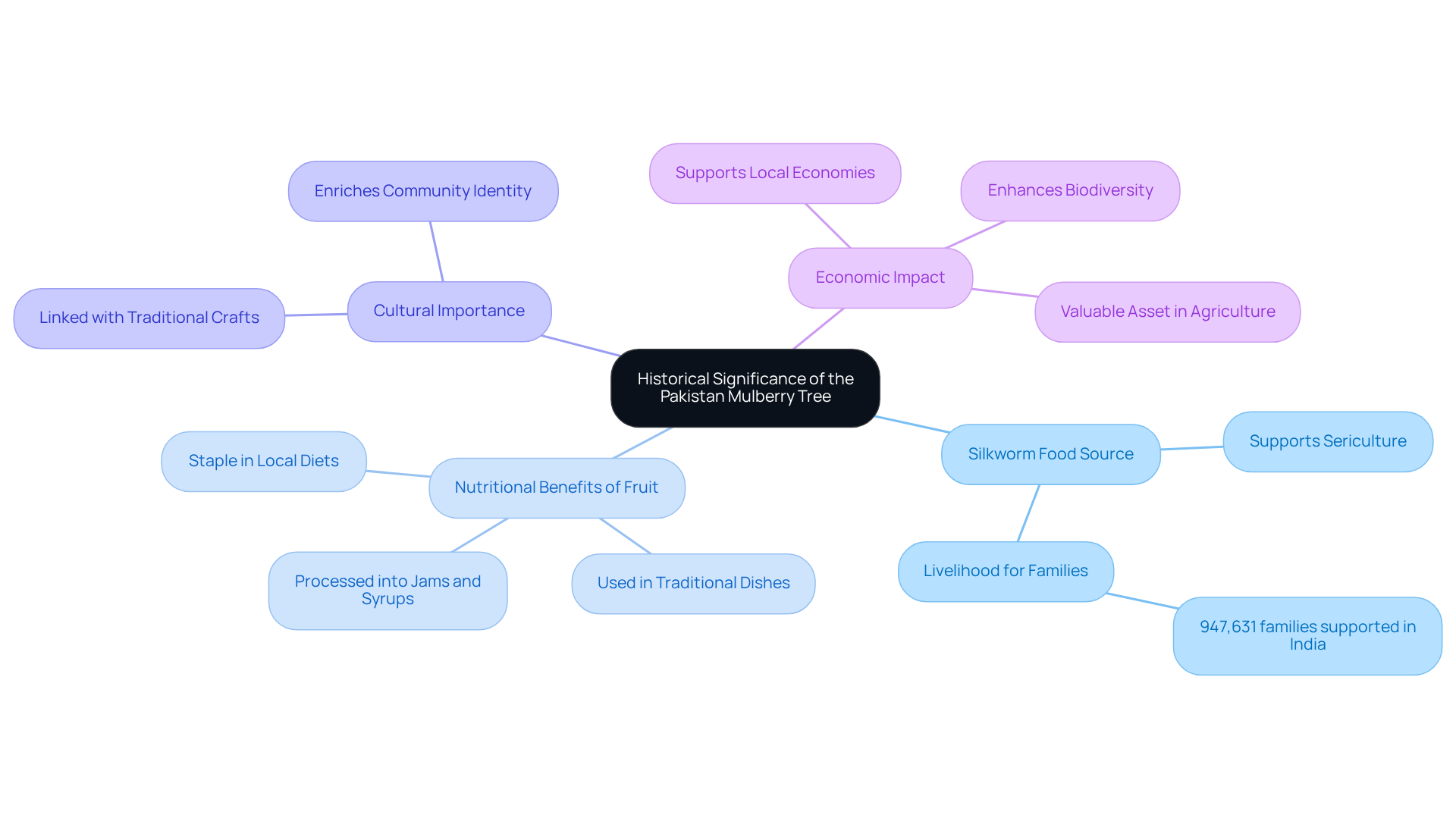
Conclusion
In conclusion, the Pakistan mulberry tree is an exceptional addition to home gardens, providing not only delicious fruit but also numerous environmental and health benefits. Its self-fertility and adaptability to various climates make it an ideal choice for gardeners of all experience levels. By cultivating these trees, gardeners can enjoy a bountiful harvest while positively impacting their local ecosystems.
This article has explored key points regarding the nutritional advantages of mulberry fruit, its culinary versatility, and the ecological benefits of planting these trees. Additionally, the cultivation requirements, including optimal sunlight, soil conditions, and pest management, offer essential insights for successful growth. The historical and cultural significance of the Pakistan mulberry tree further underscores its value beyond mere gardening.
Incorporating Pakistan mulberry trees into home gardens not only enhances personal well-being through nutritious fruit but also promotes biodiversity and sustainable practices. As interest in organic gardening continues to rise, embracing these trees can lead to a fruitful and eco-friendly gardening experience. Whether for their health benefits, culinary uses, or environmental contributions, the Pakistan mulberry tree represents a worthy investment for any gardener seeking to enrich their garden and community.
Transform Your Garden with the Delicious Pakistan Mulberry!
Start now and enjoy a bountiful harvest while enriching your community and the environment.
Frequently Asked Questions
What does Everglades Farm specialize in?
Everglades Farm specializes in providing premium Pakistan mulberry trees and other plants, ensuring home gardeners have access to high-quality, healthy specimens.
What are the unique characteristics of the Pakistan mulberry tree?
The Pakistan mulberry tree is known for its long fruits, which can reach up to 6 inches in length, and its dark ruby red to purple color. The fruits have a sweet, complex flavor similar to raspberries and blackberries. The tree is self-fertile, adaptable to various soil types and environmental conditions, and is tolerant of heat, humidity, and drought.
What are the cultivation requirements for growing Pakistan mulberry trees?
Pakistan mulberry trees require full sun, ideally receiving 6 to 8 hours of direct sunlight daily, and well-drained soil with a pH level between 6.0 and 6.8. They need regular watering, especially during dry periods, but are drought-resistant once established. Proper spacing of 30 to 50 feet apart is important for air circulation, and the trees can tolerate temperatures as low as 25 degrees Fahrenheit.
How long does it take for Pakistan mulberry trees to yield fruit?
Pakistan mulberry trees typically begin to yield fruit within 2 to 3 years after planting.
What additional products does Everglades Farm offer to support home gardeners?
Everglades Farm offers a collection of fast-growing trees and professional-grade fertilizers specifically formulated to enhance plant growth and health, addressing common challenges faced by gardening enthusiasts.


